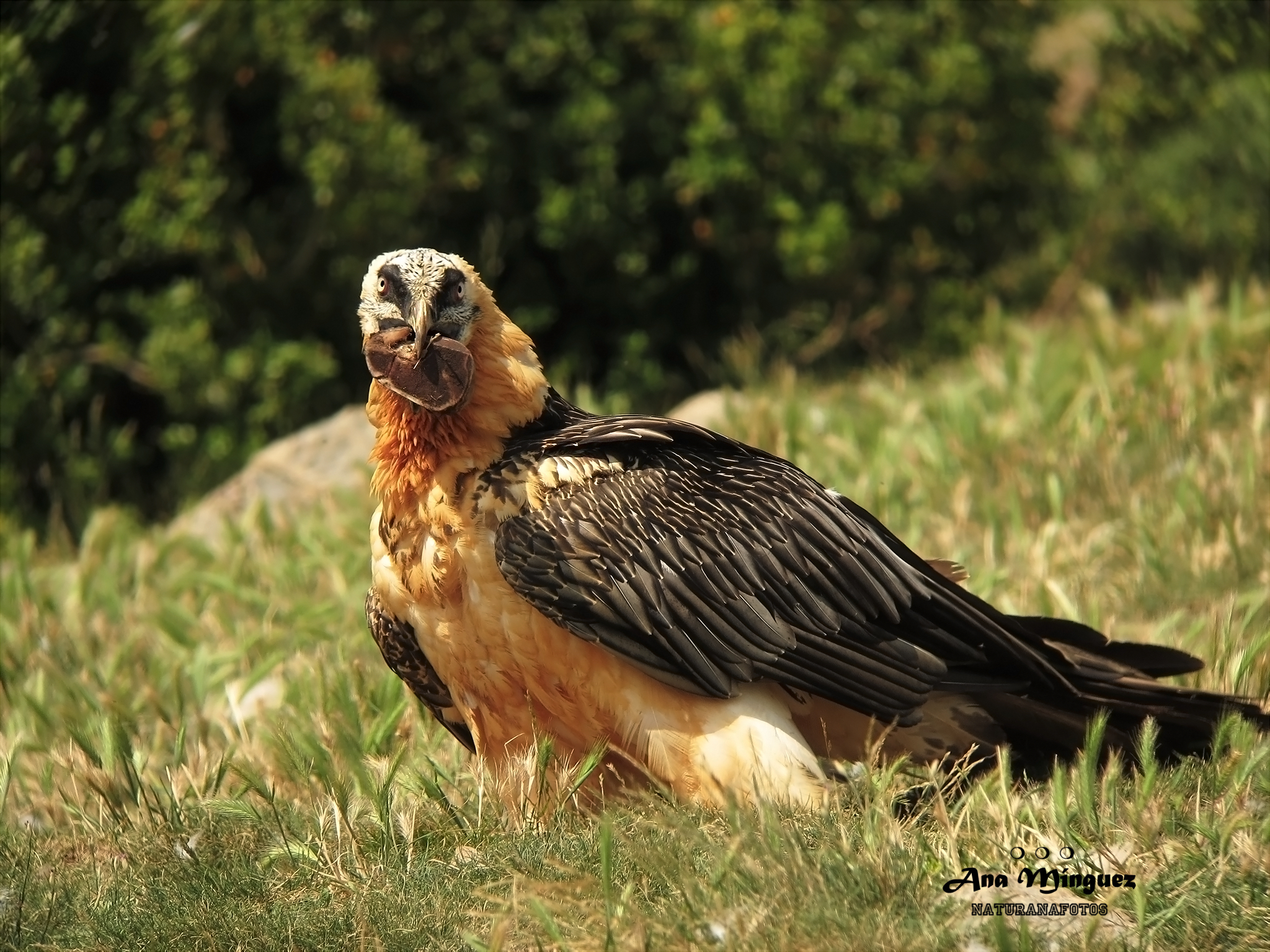The Return of the Bearded Vulture

By Jose Luis Gallego. Environmental communicator (@ecogallego)
Observing the unmistakable silhouette of the bearded vulture as it soars above the Pyrenees makes for one of the most impressive sights in Spanish nature. This unusual bird of prey, with its spectacular bearing and contrasting plumage, owes its Spanish name – quebrantahuesos or bone breaker – to the sophisticated technique it employs in obtaining its main food source: the bones, tendons, and hide of carrion it spots in the fields.
To make ingesting its food easier, the bearded vulture – a nod to its scientific name (Gypaetus barbatus) – usually tears apart the bones, even entire carcasses, of animals that have died in the fields and whose bodies have already provided nourishment to other vultures, corvids, and the greater scavenger community. When only the bones remain, our protagonist enters the scene.
Once grasped in its powerful talons, the “bone-breaking” vulture takes flight and hurls the bones from way up high against rocks in certain parts of the mountains, mainly boulders, rocky ground or rock debris at the base of a cliff. From the sky, the bird spots these enclaves, which ornithologists refer to as “breakers”. After the bones crash into the rocks and break, they, along with other carrion remnants, are easier for the raptor to ingest.

A bearded vulture
Growing to a height of more than a metre, and with a wingspan of almost three, the bearded vulture is one of the largest birds on the European continent. In flight, it is easily recognizable thanks to its characteristic tail feathers: elongated and shaped like a rhombus. The wings are also very long and narrow. Perched, the bearded vulture sports some of the most magnificent plumage among raptors, with dense feathers around the legs (as though the bird were wearing bell bottoms). These are orange-tinged, just like the rest of the feathers covering it from head to abdomen.
This famous orange colour derives from natural pigments, especially iron oxide, present in the ferruginous waters where the vultures like to bathe, primarily high mountain springs and streams. Ornithologists have observed that this is purely a cosmetic treatment, which both sexes use to embellish their appearance.
As for the wings, they are a gorgeous, very shiny, slate-black colour. The namesake beard is the most noticeable facial attribute, reaching from the bird’s face to below the beak, and its red-rimmed yellow eyes convey a false impression of fierceness. One-year-olds are a replica of their parents, but in shades of brown.

A bearded vulture
The mating season takes place in the autumn when pairs of bearded vultures engage in all sorts of aerial acrobatics, crashing their talons into each other, and sending out a long, high-pitched call. Bearded vultures build large nests using branches, which are often more than two metres in diameter and usually perched on inaccessible rocky outcrops along sheer cliffs in high mountain areas. Females tend to lay two eggs, which they incubate for a couple of months, usually between January and February, although in most cases, only one chick ends up hatching. Reproduction rates are very low with a great many failed attempts in captive breeding.
Included in the Spanish Catalogue of Threatened Species (Catálogo Español de Especies Amenazadas) as a species at risk of extinction, the bearded vulture is highly sensitive to changes in its territory. Among the greatest disturbances are the foray of industrial agriculture into mountain regions, the decline in extensive cattle grazing, the illegal use of poison in fields, and the proliferation of electrical towers.
In recent years, the incorrect placement of wind farms in areas that are particularly sensitive bird habitats has become a significant immediate threat. Over the past few months, reports of the death of several bearded vultures after colliding with wind turbines has raised alarm. This exemplifies how the uncontrolled spread of renewable energy in areas of high ecological value can have a serious environmental impact.
During the 1970s, the Iberian population of bearded vultures dropped to around a dozen breeding pairs in the Pyrenees. The species was on the brink of extinction. Today, the bearded vulture is once again taking flight thanks to protection measures introduced by the authorities, the immense efforts of conservation groups and scientific institutions, and the invaluable contribution of the European Union’s LIFE programme.
Over the past two decades, conservation efforts have managed to restore bearded vulture populations in the Pyrenees, even reintroducing the species, with notable success, to some of its old territories: the Picos de Europa and Andalusian mountain ranges. And so, thanks to the efforts of many, nature lovers can celebrate the return of the bearded vulture.
